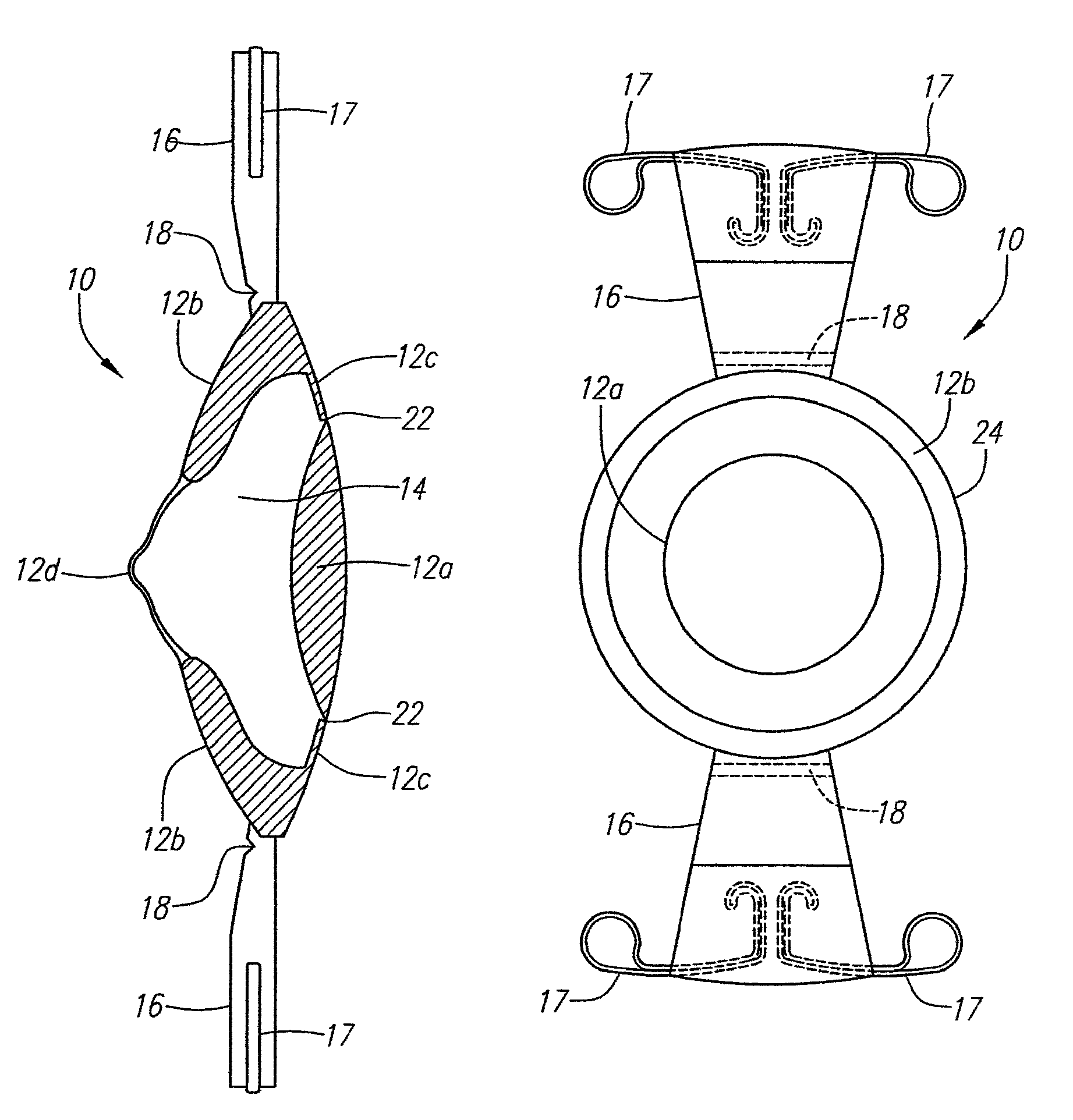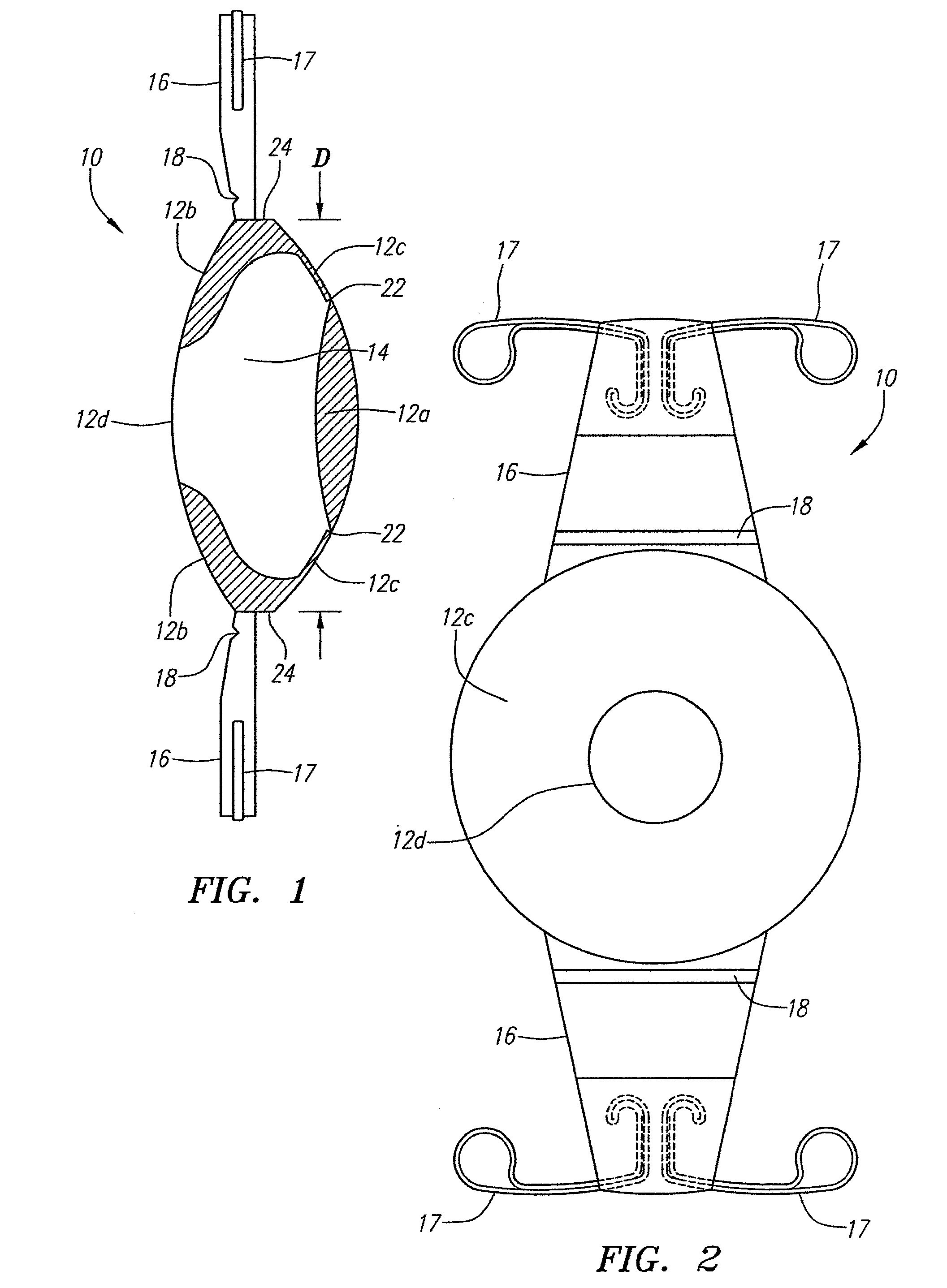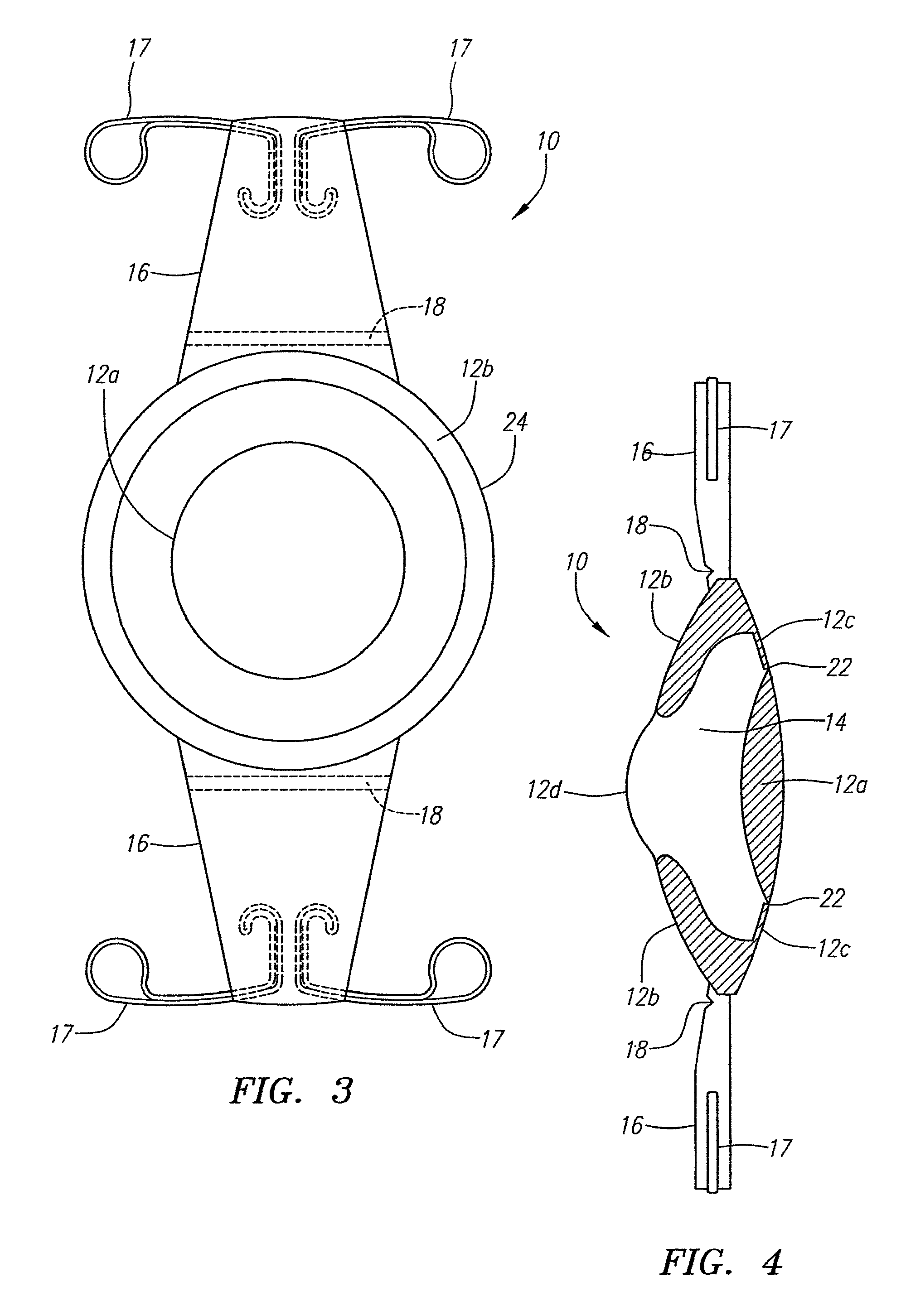Hydrolic accommodating intraocular lens
a technology of intraocular lens and hydrophilic material, which is applied in the field of hydrophilic accommodating intraocular lens, can solve the problems of acrylic material fracture if repeated flexing, limited materials from which the lens can be folded, and the lens could not fixate well in the capsular bag, etc., so as to reduce the radius of the anterior surface, increase the curvature, and simulate the effect of function
- Summary
- Abstract
- Description
- Claims
- Application Information
AI Technical Summary
Benefits of technology
Problems solved by technology
Method used
Image
Examples
Embodiment Construction
[0017]Turning now to the drawings, a preferred embodiment is shown in detail, comprising an intraocular lens with an optic 10 and haptics 16. The optic 10 is formed of two components, namely, a flexible solid portion 12 (12a-12d) preferably made of silicone, acrylic or hyrdrogel, and an interior liquid silicone portion 14. The portions 12a and 12b are sufficiently solid to prevent defomation of the optic 10 upon implantation into the fibrosed capsular bag of the eye. The flexible extending portions 16 may be plate haptics which are capable of multiple flexations without damage, and formed, for example, of silicone. The optic 10 and haptics 16 preferably are uniplanar, and two or more haptics 16 extend distally from opposite sides of the optic 10. The outer ends of the haptics 16 may include flexible fingers 17 such as disclosed in U.S. Pat. No. 6,387,126 to Cumming. Preferably the edge 24 of the optic is a 360° square edge.
[0018]The lens 10 includes portions 12a, 12b and 12d of soli...
PUM
 Login to View More
Login to View More Abstract
Description
Claims
Application Information
 Login to View More
Login to View More - R&D
- Intellectual Property
- Life Sciences
- Materials
- Tech Scout
- Unparalleled Data Quality
- Higher Quality Content
- 60% Fewer Hallucinations
Browse by: Latest US Patents, China's latest patents, Technical Efficacy Thesaurus, Application Domain, Technology Topic, Popular Technical Reports.
© 2025 PatSnap. All rights reserved.Legal|Privacy policy|Modern Slavery Act Transparency Statement|Sitemap|About US| Contact US: help@patsnap.com



